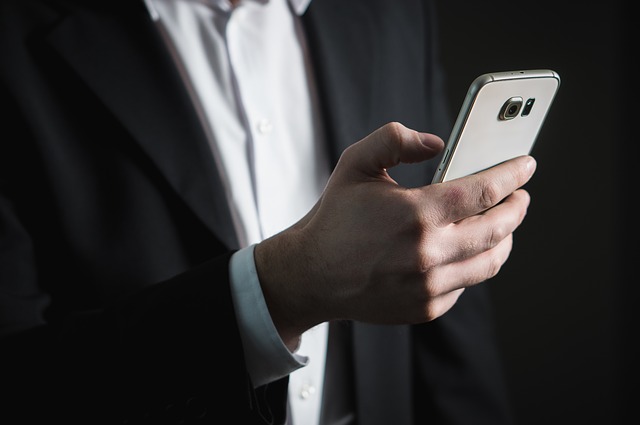Two of the top trending technology-related topics are mobile advertising and wearable technology. As if each of these subjects didn’t already have enough questions surrounding them individually—with wearable device loitering just outside the profitability sweet spot, and mobile advertisers pouring more time, effort and money into making campaigns more effective with minimal results at best—the two subjects are now melding into a completely new field of focus: mobile advertising through wearable technology.
So how exactly will wearable technology mesh—or clash—with mobile advertising?
While some advertisers view the proliferation of the wearable technology as a complication to an already burdened effort, founder and CEO of Appetizer Mobile, Jordan Edelson, sees it as an opportunity. He also believes that biotech data gathered via sensors in wearable devices is the bridge, and that it can lead to effective, well-targeted advertising for consumers.
“Advertisers need to get a bit more creative as far as how they reach their end user and hopefully make a more highly targeted connection with them and therefore have a more effective outcome,” Edelson told TMC in an interview. “What’s happening and what is going to be happening over the next couple of years is the development of your bio-analytical profile that marketers and advertisers will have access to under hopefully more controlled conditions.”
According to Edelson, information regarding breathing patterns, pulse, body temperature and even voice patterns can be gathered using wearable devices that range from smartwatches, wristbands such as Fitbit, and even clothing that has smart sensors embedded in the fabric such as hats and shirts. Wearables that utilize this tech have already proven to be exceptionally useful for health monitoring and maintenance by collecting data that can be analyzed through myriad mobile applications. In the same way that this system helps people live healthier, it will help advertisers give consumers the gift of relevant marketing.
Edelson provided the example of a health food restaurant trying to target prospective customers. A Fitbit or an Apple Watch might be able to determine glucose levels, and based on a user’s heart rate, may also know that he or she has just been exercising. Edelson explained, “Therefore you might be interested in healthy food, and you might be hungry after the workout, so then they target you and push that ad or notification to the watch or to your phone, and this might have a better overall chance of converting.”
The idea sounds plausible enough, and it yields the potential to help people with certain health goals. But can it carry over to areas unrelated to health? How about, say, clothes shopping? According to Edelson, it can, and it may be able to do it better than real-time mobile advertising systems already in place.
“The best example is the iBeacon program, which some stores are starting to utilize . . . you go into Macys and you get a picture notification if you’re in a certain area of the store with an ad, but again the accuracy of that and how effective it is, is decent.” Edelson said. “But imagine once there is a sensor embedded that can actually read your heart rate. Say if you’re a female looking at a pair of Louis Vuittons, your heart rate might elevate, and based off of that data advertisers will know there is some sort of interest, or that you like what you’re looking at, and therefore push an ad or discount in real time.”
Essentially, this means that data from wearable devices can help companies achieve targeted marketing for products that prospective consumers want, in addition to what they need. And in theory, the accuracy of this type of information will only be enhanced through biological data. For example, advertisers might be able to avoid sending a user with heart problems who exercises on a regular basis ads from Chik-fil-A. But another user who exercises and has a strong heart rate and a steady pulse might still receive an ad for a local steakhouse. Paired with other data, such as that gathered through social media and search results, biosensors on wearable devices can differentiate between a person in his or her mid-twenties who is trying to bulk up, and a middle-aged person with a heart-attack risk who must eat healthier. In addition to being more accurate, this type of advertising could be inherently more responsible.
The caveat for many users will undoubtedly be potential invasiveness. Advertisers already know a lot about us, including some information about our biometrics, based on our online meanderings, but having this data gathered directly from sensors worn on our bodies is something most people only feel comfortable doing in a medical setting or with their wearable devices in the privacy of their personal space. Consumers must be able to control the degree to which their biological data is shared, and advertisers will need to be careful with how they handle and use the sensitive information they acquire. Edelson cited retina scanning in the film, Minority Report, as an example of what probably shouldn’t happen. The success of biometric information as a means to shrink advertisers’ crosshairs will depend heavily on responsible application of user data.
“Now is when a lot of companies are starting to lay the groundwork to build some of these different systems, but I hope people use some sort of best practices as they approach it so they don’t scare consumers away, because I think it’s a huge opportunity to change the entire landscape,” Edelson said.
Companies that pull it off have a lot to gain, or as Edelson put it, “there’s a big opportunity here, and I think whoever figures it out is going to make a boatload of money in this space. I think it’s only a matter of time.”
View the entire article at: http://www.wearabletechworld.com/topics/wearable-tech/articles/401169-biotech-sensors-wearable-devices-streamline-mobile-advertising.htm





Latest comments